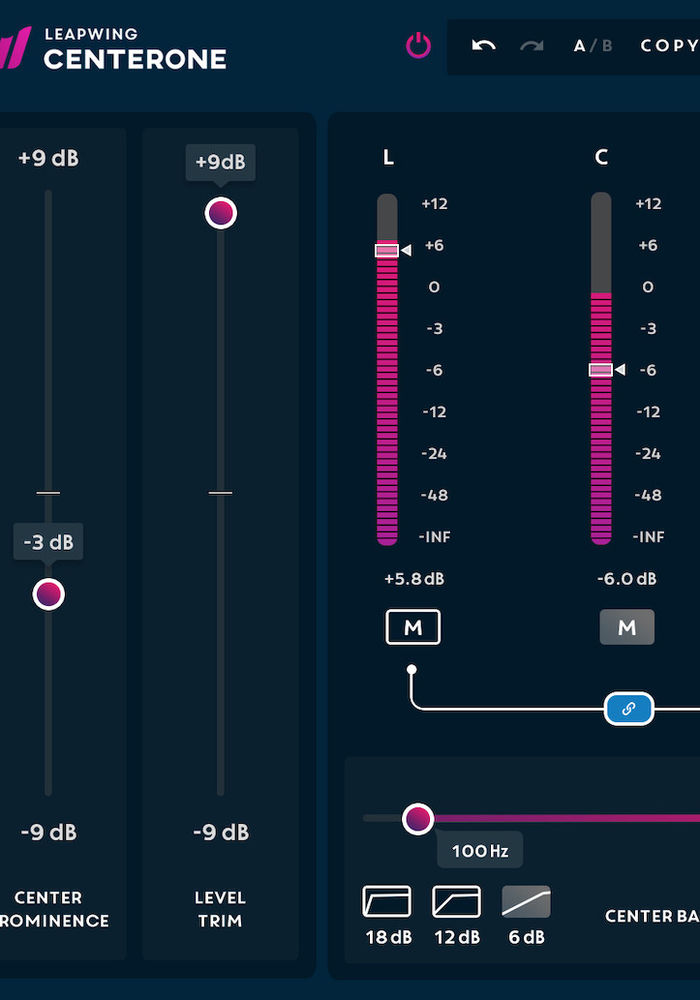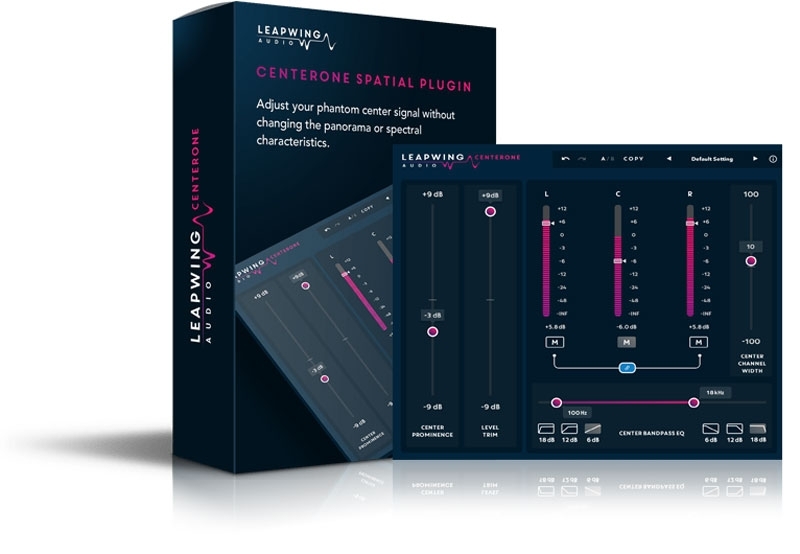Following on from Headliner’s recent look at Leapwing Audio’s excellent range of One plugins is CenterOne – an updated version of the company’s first plugin product which was launched some five years ago. This latest revision, available now, has added a number of really useful features, and this is what we’ll be looking at today...
Leapwing Audio is a developer that has come up with a number of truly unique products; tools which have found ways of tackling age-old problems with new ideas and a fresh new approach.
CenterOne is a spatial plugin designed to give you full control and manipulation of your phantom centre. Now, if you’re not familiar with the term ‘phantom centre’, this is simply the audio that sits between the two speakers within a stereo image, and sounds as though it is coming from a non-existent centre speaker.
Traditionally, spatial plugins use mid-side techniques to manipulate the stereo image. The concept of mid-side can be a little difficult to get your head around, not to mention the fact that it can be approached in different ways. It’s here again that Leapwing differs from the mid-side algorithms and actually sets up as a left-centre-right rebalancing plugin, all while giving you a really comprehensive palette of tools with which to extract, control and manipulate your centre image.





